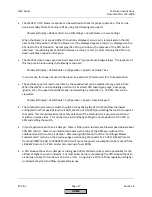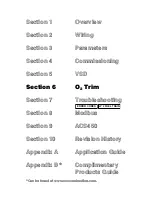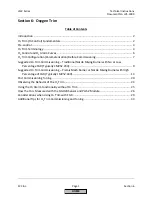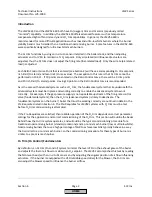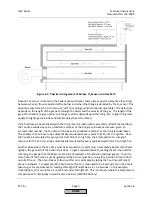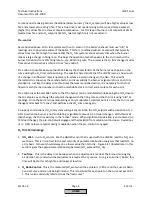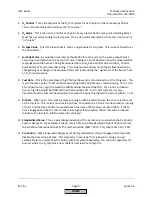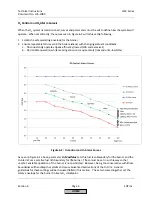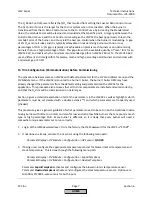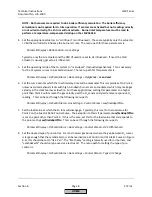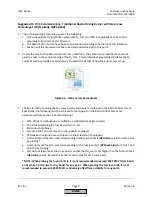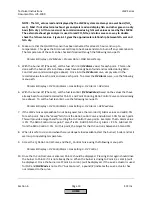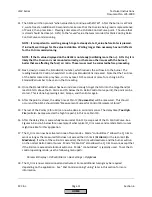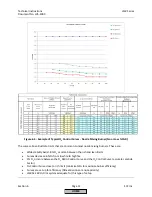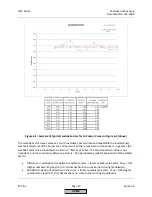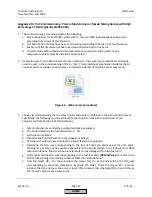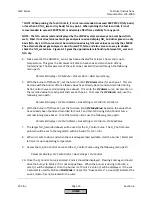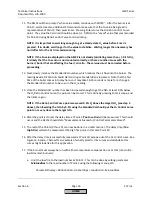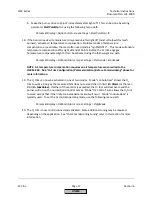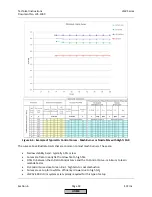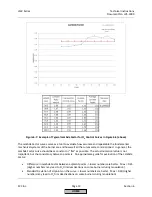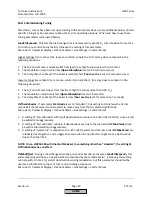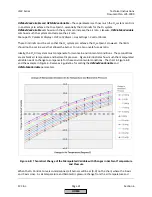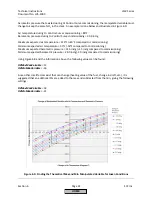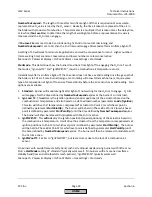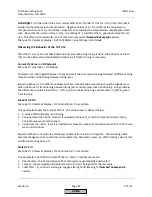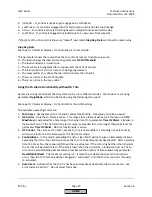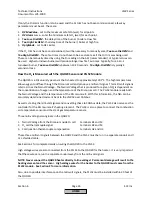
LMV
Series
Technical
Instructions
Document
No.
LV5
‐
1000
SCC
Inc.
Page
11
Section
6
11.
The
AZL52
will
then
prompt
"when
value
stable,
continue
with
ENTER”.
After
the
burner
is
at
Point
2,
wait
at
least
an
additional
30
seconds
to
make
sure
that
the
O
2
value
being
read
is
representative
of
Point
2,
then
press
Enter.
Pressing
Enter
stores
the
O
2
Ratio
Control
Curve
point.
The
value
that
is
stored
should
be
close
(+/
‐
0.2%)
to
the
"saved"
value
that
was
recorded
for
Point
2
during
Ratio
Control
Curve
commissioning.
NOTE:
It
is
important
to
wait
long
enough
to
get
a
steady
‐
state
O
2
value
before
Enter
is
pressed.
If
in
doubt,
wait
longer
for
the
value
to
stabilize.
Waiting
longer
than
necessary
has
no
ill
effects
for
the
O
2
trim
commissioning.
NOTE:
If
the
O
2
value
displayed
on
the
AZL52
is
not
steady
(oscillating
more
than
+/
‐
0.1%
O
2
),
it
is
likely
that
the
O
2
sensor
is
not
mounted
correctly,
or
there
are
other
issues
with
the
burner
/
boiler
that
are
affecting
the
fuel
/
air
ratio.
These
issues
must
be
corrected
before
proceeding.
12.
Next,
slowly
increase
the
StandardVal
number,
which
reduces
the
air
flow
into
the
burner.
The
reading
beside
O2
Control
should
start
to
drop
as
StandardVal
is
increased.
Note
that
the
Tau
time
of
the
boiler
comes
into
play
here,
so
it
may
take
10
‐
15
seconds
or
more
for
a
change
in
the
StandardVal
number
to
be
seen
in
the
O
2
reading.
13.
Once
the
StandardVal
number
has
been
increased
enough
to
get
the
%O
2
into
the
target
band
(at
least
0.5%
O
2
above
the
O
2
Alarm
and
1%
below
the
O
2
Ratio
Control
Curve
point),
the
point
can
be
stored.
This
is
done
by
pressing
Enter,
Escape,
and
then
Enter
again.
14.
After
the
point
is
stored,
the
delay
time
at
Point
2
(
Tau
Low
‐
Fire
)
will
be
measured.
This
should
occur
and
the
AZL52
should
state
"Measurement
Successful,
Control
Parameters
Stored".
15.
The
rest
of
the
Points
(3
thru
10)
can
now
be
done
in
a
similar
manner.
The
delay
time
(
Tau
High
‐
Fire
)
will
also
be
measured
at
the
high
fire
point,
in
this
case
Point
10.
16.
After
the
delay
time
is
successfully
measured
at
Point
10,
escape
out
of
the
O
2
Control
Curve.
See
Figures
6
‐
4
and
6
‐
5
below
for
an
example
of
what
typical
O
2
trim
curves
and
Lambda
Factor
curves
might
look
like
for
this
application.
17.
The
O
2
trim
can
now
be
activated
in
one
of
two
modes.
Mode
“conAutoDeac”
allows
the
O
2
trim
to
work
as
long
as
the
measured
%O
2
does
not
exceed
the
rich
limit
(
O
2
Alarm
)
or
the
lean
limit
(
O
2
MaxValue).
If
either
of
these
limits
is
exceeded,
the
O
2
trim
will
deactivate
and
the
burner
will
run
on
the
normal
Ratio
Control
Curves.
Mode
“O2
Control”
also
allows
the
O
2
trim
to
work,
except
that
if
the
limits
are
exceeded
a
lockout
will
occur.
Mode
“conAutoDeac”
is
typically
used.
To
set
the
O
2
control
operating
mode,
use
the
following
menu
path:
Params
&
Display
>
O2Contr/Alarm
>
Gas
Settings
>
OptgMode
18.
The
O
2
trim
is
now
commissioned
and
activated.
Some
additional
tuning
may
be
required
depending
on
the
application.
See
"Post
Commissioning
Tuning"
later
in
this
section
for
more
information.
HOME
Summary of Contents for LMV 5 Series
Page 2: ...Intentionally Left Blank ...
Page 41: ...LMV Series Technical Instructions Document No LV5 1000 SCC Inc Page 7 Section 2 HOME ...
Page 42: ...Technical Instructions LMV Series Document No LV5 1000 Section 2 Page 8 SCC Inc HOME ...
Page 43: ...LMV Series Technical Instructions Document No LV5 1000 SCC Inc Page 9 Section 2 HOME ...
Page 44: ...Technical Instructions LMV Series Document No LV5 1000 Section 2 Page 10 SCC Inc HOME ...
Page 45: ...LMV Series Technical Instructions Document No LV5 1000 SCC Inc Page 11 Section 2 HOME ...
Page 46: ...Technical Instructions LMV Series Document No LV5 1000 Section 2 Page 12 SCC Inc HOME ...
Page 47: ...LMV Series Technical Instructions Document No LV5 1000 SCC Inc Page 13 Section 2 HOME ...
Page 48: ...Technical Instructions LMV Series Document No LV5 1000 Section 2 Page 14 SCC Inc HOME ...
Page 49: ...LMV Series Technical Instructions Document No LV5 1000 SCC Inc Page 15 Section 2 HOME ...
Page 50: ...Technical Instructions LMV Series Document No LV5 1000 Section 2 Page 16 SCC Inc HOME ...
Page 51: ...LMV Series Technical Instructions Document No LV5 1000 SCC Inc Page 17 Section 2 HOME ...
Page 52: ...Technical Instructions LMV Series Document No LV5 1000 Section 2 Page 18 SCC Inc HOME ...
Page 53: ...LMV Series Technical Instructions Document No LV5 1000 SCC Inc Page 19 Section 2 HOME ...
Page 54: ...Technical Instructions LMV Series Document No LV5 1000 Section 2 Page 20 SCC Inc HOME ...
Page 55: ...LMV Series Technical Instructions Document No LV5 1000 SCC Inc Page 21 Section 2 HOME ...
Page 373: ...Intentionally Left Blank ...

